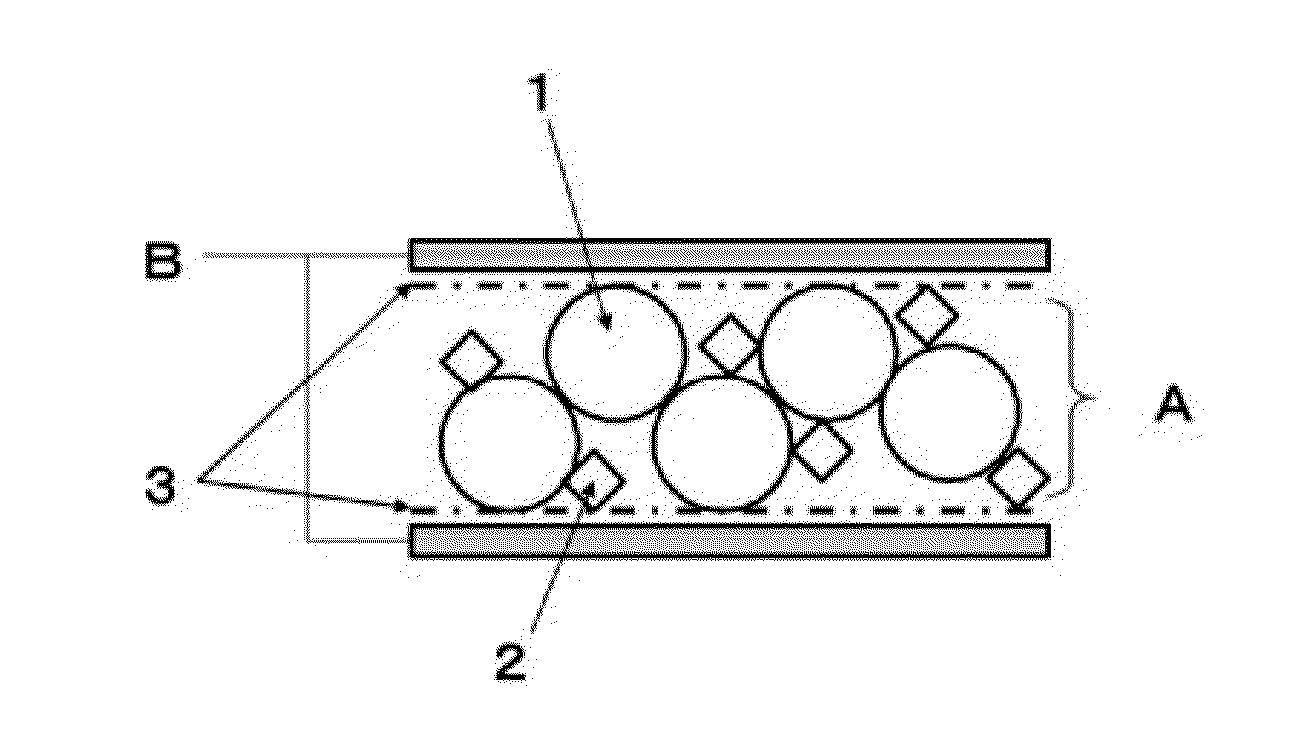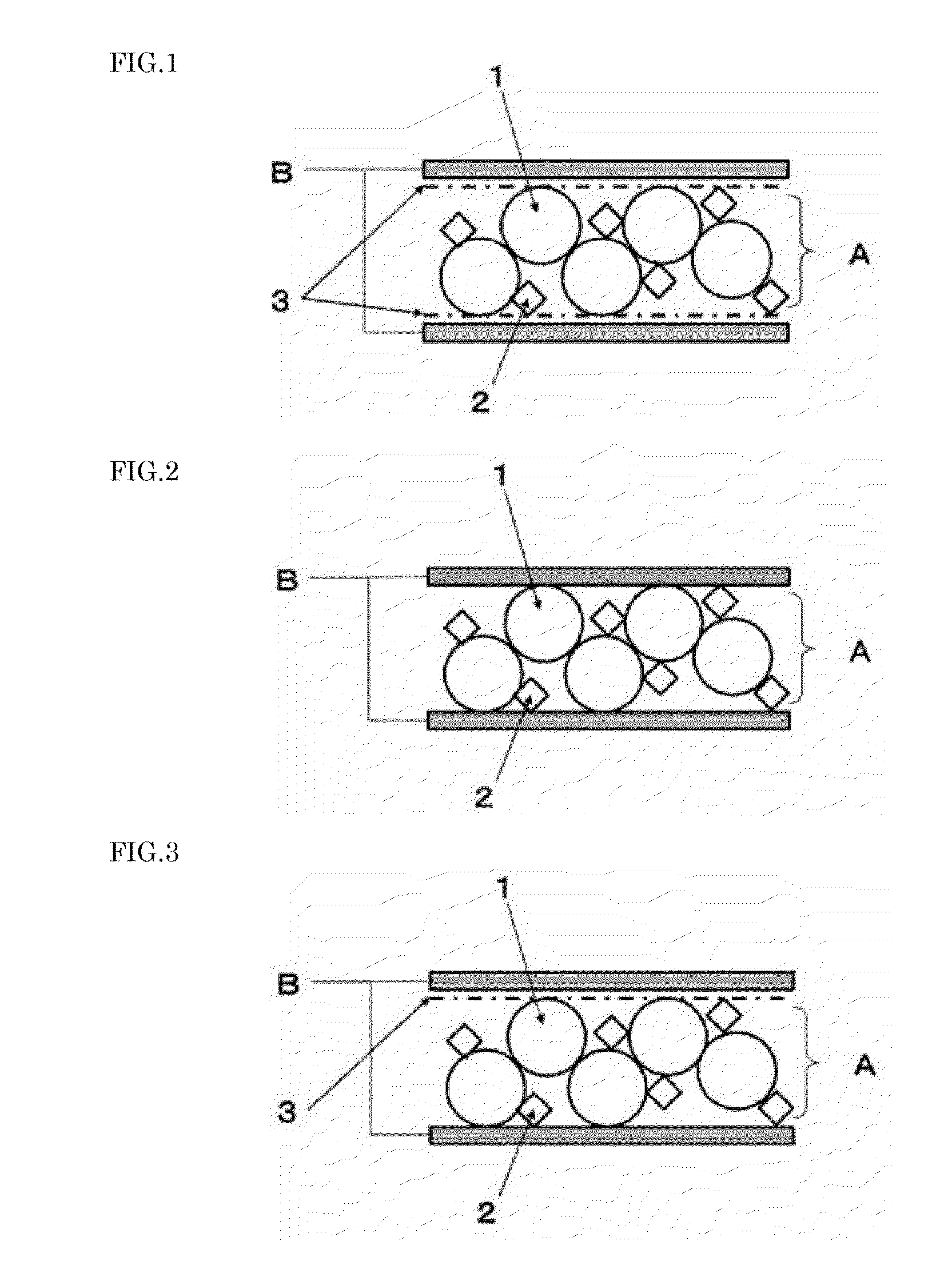Flame-retardant deodorizing filter
a deodorizing filter and flame retardant technology, applied in the field of flame retardant deodorizing filters, can solve the problems of insufficient flame retardancy insufficient flame retardancy, etc., and achieve the effect of satiating both flame retardancy and voc removal/ozonolysis performance, and sufficient adhesiveness
- Summary
- Abstract
- Description
- Claims
- Application Information
AI Technical Summary
Benefits of technology
Problems solved by technology
Method used
Image
Examples
example 1-1
[0071]After an activated carbon layer was formed by spraying a mixture obtained by mixing activated carbon particles (average particle diameter 500 μm) in an amount of 250 g / m2 and thermoplastic resin binder particles (average particle diameter 20 μm, polyethylene resin) in an amount of 12.5 g / m2 onto the cover material (A2) prepared in the preparation of cover material 2, and the cover material (A2) was laminated on the activated carbon layer, the obtained layered product was sandwiched between iron plates heated to 140° C. and heat-pressed for 1 minute to produce a filter having the activated carbon layer firmly adhered by the thermoplastic resin binder particles. In this case, the weight per unit area of the filter was 340.5 g / m2.
example 1-2
[0072]After an activated carbon layer was formed by spraying a mixture obtained by mixing activated carbon particles (average particle diameter 500 μm) in an amount of 250 g / m2 and thermoplastic resin binder particles (average particle diameter 20 μm, polyethylene resin) in an amount of 12.5 g / m2 onto the cover material (A3) prepared in the preparation of cover material 2, and the cover material (A3) was laminated on the activated carbon layer, the obtained layered product was sandwiched between iron plates heated to 140° C. and heat-pressed for 1 minute to produce a filter having the activated carbon layer firmly adhered by the thermoplastic resin binder particles. In this case, the weight per unit area of the filter was 350.5 g / m2.
example 1-3
[0073]After an activated carbon layer was formed by spraying a mixture obtained by mixing activated carbon particles (average particle diameter 500 μm) in an amount of 250 g / m2 and thermoplastic resin binder particles (average particle diameter 20 μm, polyethylene resin) in an amount of 12.5 g / m2 onto the cover material (A4) prepared in the preparation of cover material 2, and the cover material (A4) was laminated on the activated carbon layer, the obtained layered product was sandwiched between iron plates heated to 140° C. and heat-pressed for 1 minute to produce a filter having the activated carbon layer firmly adhered by the thermoplastic resin binder particles. In this case, the weight per unit area of the filter was 368.5 g / m2.
PUM
| Property | Measurement | Unit |
|---|---|---|
| temperature | aaaaa | aaaaa |
| specific surface area | aaaaa | aaaaa |
| particle diameter | aaaaa | aaaaa |
Abstract
Description
Claims
Application Information
 Login to View More
Login to View More - R&D
- Intellectual Property
- Life Sciences
- Materials
- Tech Scout
- Unparalleled Data Quality
- Higher Quality Content
- 60% Fewer Hallucinations
Browse by: Latest US Patents, China's latest patents, Technical Efficacy Thesaurus, Application Domain, Technology Topic, Popular Technical Reports.
© 2025 PatSnap. All rights reserved.Legal|Privacy policy|Modern Slavery Act Transparency Statement|Sitemap|About US| Contact US: help@patsnap.com


